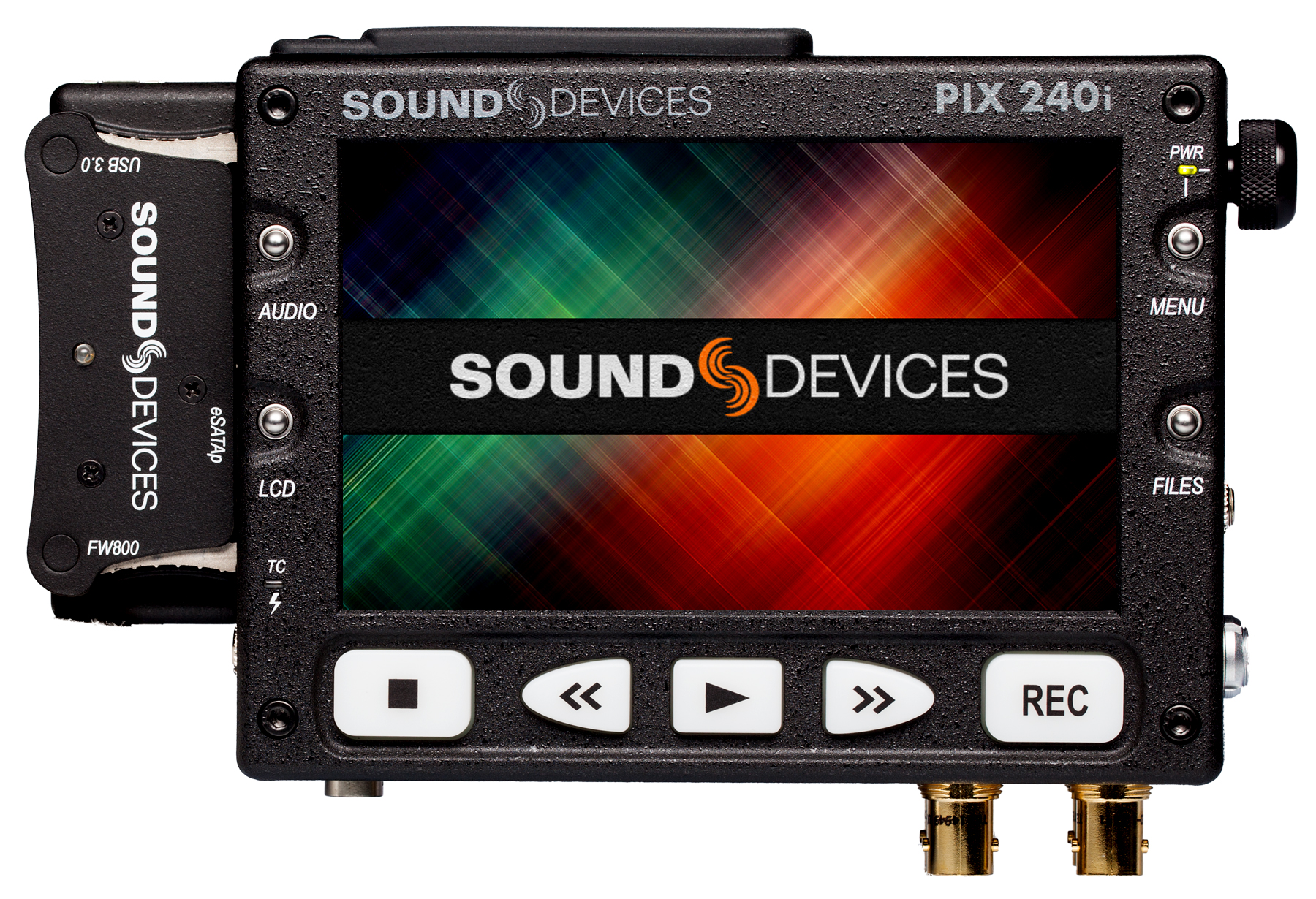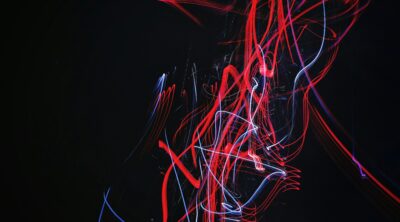< Back to all posts
Field Recorder Review
Video professionals often ask me what field recorder is the best for their video production. Unfortunately, there isn’t one recorder that fits every production workflow. Here is a review of three field recorders that I use often: the nanoFlash by Convergent Design, the Pix240 by Sound Devices, and the Ninja Blade by Atomos.
nanoFlash
Pros: The recorder is small, rugged, and has a low power draw. We’ve never had any sort of ‘over heating’ issues in our six years of use. It’s the size of a wireless receiver. CompactFlash media has come down tremendously in price, so it’s easy to get media and it’s quite cheap. It can input HDMI or SDI and transport the signal to the other connection if desired; it’s great as a signal converter too! The nanoFlash can start via a remote control “dead man’s switch”, something no other device can do. If you record in the 50Mbps MXF mode, those files can immediately be copied to an XDCam optical disc, and played back on any XDCam device (cameras and decks). It essentially records the same file as a Sony F800 or PDW700. BEC make ‘boxes’ similar to wireless boxes, which makes attaching the nanoFlash to cameras a breeze.
Cons: First and foremost, there isn’t a screen. To “see” the signal, the unit must be connected to a monitor. Some feel a lack of confidence with this field recorder because of this fact. (Generally, we start by checking the signal, and then unplug for the duration of the day). The naming structure of the clips is HORRIBLE! It’s too bad Convergent Design never implemented any kind of adequate naming system. This was designed before “SDI flags” so it can’t be used in a ‘time of day mode’ (popular with reality shows and multicamera shoots) without constantly recording or using the remote switch. (The remote switch STARTS great… but is difficult to STOP recording.) There is no ‘transcoding’ of the signal, it records what’s fed into it. You can’t upconvert 720 signals to 1080 or vice versa. It won’t allow for frame rate conversions either. The nanoFlash works GREAT with Sony, Panasonic, and Canon cameras. For whatever reason it does NOT like Red cameras. We have nothing but trouble with the nanoFlash when trying to use it with the Epic or Scarlett, and I don’t recommend this unit in those instances. Sometimes it works while other times it doesn’t; there isn’t any consistency.
PIX 240
Pros: The build quality is fantastic. It has a ‘metal’ frame, and this thing is built to take a beating. The only recorder on the market with audio ins and outs! It has TC ins and outs too! The PIX 240 can up/down/cross convert signals and frame rates! This is terrific if you have a 1080 only camera and the client needs 720 or vice versa. It’s also handy if the client likes the 24p look, but wants a 30p signal. Power options are terrific, utilizing several different battery types or ‘plug’ types (Hirose, D-tap, Lemo etc.) The unit has zebra stripes, false color, and peaking. It has great tactile buttons, and you KNOW when it’s recording. It has SDI flags for nearly every camera on the market to start and stop recording. There are numerous ways to name media, including RED naming structures. TC can be jammed or originated in the unit. Sound Devices make a TERRIFIC screen protector, it’s cheap and replaceable. The sunshade is extremely unique in that it connects via magnets! Genius!

(Pictured PIX 240i upgrade to PIX 240)
Cons: This baby is HEAVY! You need a rigid ‘Noga’ type arm to mount it to your camera so it stays in place. It’s also very power hungry. Be prepared to go through batteries in the field! It has a large fan on the back that needs constant air flow, so careful placement of the unit in relation to a camera or mounting surface is necessary… block that fan, and the unit overheats, and shuts down. I wish it had an MXF as a codec option. It only records toDNxHD andProRes. One MUST buy a ‘drive caddy’ to be able to use the field recorder, and it’s a ‘separate’ purchase. The SSDs “qualified” by Sound Devices are some of the most expensive out there. The price of the Pix is also one of the most expensive too.
Ninja Blade
Pros: This unit is small for a recorder with a screen and it’s VERY lightweight. It can be mounted anywhere with no fans or over heating worries. The screen is very nice with great color reproduction and can even be calibrated too. It has a very low power draw, especially considering it does have a video screen. The Ninja has a waveform monitor and vectorscope included the only recorder with these features in this ‘size’ category. It utilizes false color, peaking (in a variety of modes), and zebra stripes. SDI flags come standard and it has a variety of naming structures, including RED and Arri. Atomos encourages the use of spinning drives! I was skeptical at first, but after spending some time with CEO Jeromy Young, I’m CONVINCED this is the way to go! We violently SHOOK the camera while recording, ran with it, jumped up and down, and it NEVER dropped a single frame! The best part is how cheap spinning notebook drives are to purchase! They could be client masters if you want! Drive caddies, cables, and accessories all come with the unit in a case! (All except one single cable). You just can’t beat the price.
.jpg)
Cons: There aren’t “pro” audio inputs. (There is an audio input in terms of 1/8th” jack). There aren’t any timecode ins or outs except for embedded streams in the SDI signal. The Ninja can’t do any signal or frame rate conversion. (What goes in must come out!) I wish this could record MXF files, if you want to use different signals you need a different unit. The Ninja only has an HDMI port not to be confused with the Atomos Samurai which has a SDI port. (This CHANGES with the impeding Shogun, coming soon). The D-tap cable accessory is hard to find and a bit expensive; I don’t understand why this is the ONLY accessory that doesn’t come with the device.
For my company, there isn’t a clear cut winner. Unfortunately, it depends on what codec our client wants and what film location we are in, and what camera we plan on using to create that media. If we need to provide Sony MXF files, we use the nanoFlash (with the exception of shooting with RED cameras, then we use something else, and transcode the QT files to MXF files later). These days I think everyone likes to have some sort of ‘screen’ to view the recorded image, so the nanoFlash isn’t the first choice in that world. If we need to convert the signal, there is only one choice the PIX 240. We’ve been asked to provide 720 material on occasion, and with the Sony F350, it only shoots in 1080, so it’s impossible without a signal converter of some sort. If we are shooting on green screen , we must use a waveform monitor and vectorscope. The Atomos are the only ‘small’ recorders with this option. If the audio is being provided from a mixer and NOT the SDI signal the PIX is the obvious choice. If clients are tight on budget, and are willing to accept spinning drives, nothing beats the Atomos in terms of cost per megabyte! The spinning drives are easy masters.







I saw this posted years ago by Curt Pair. Who’s Brad?
Brad (who was one of our Crews Control Production Managers) wrote the original article.